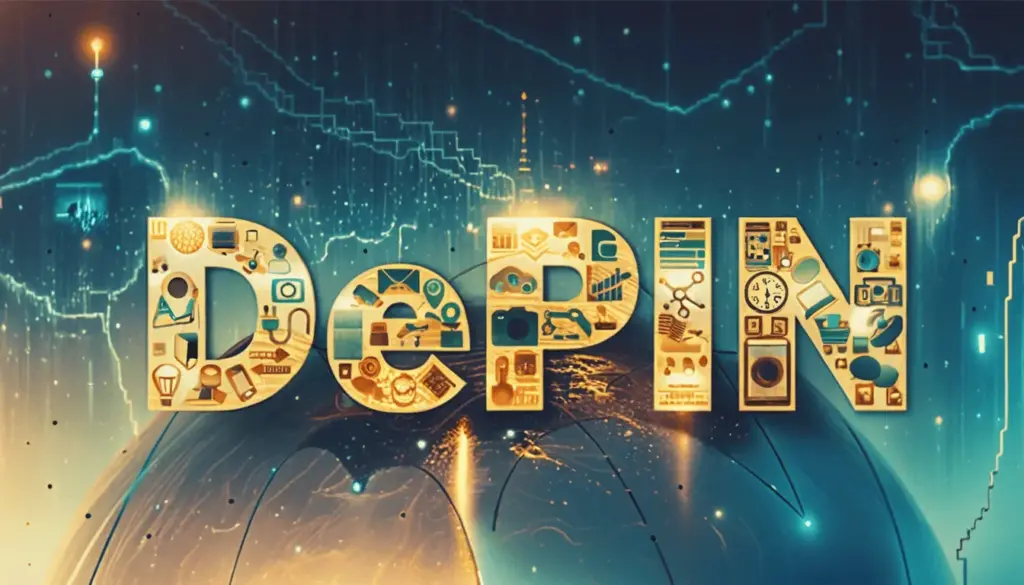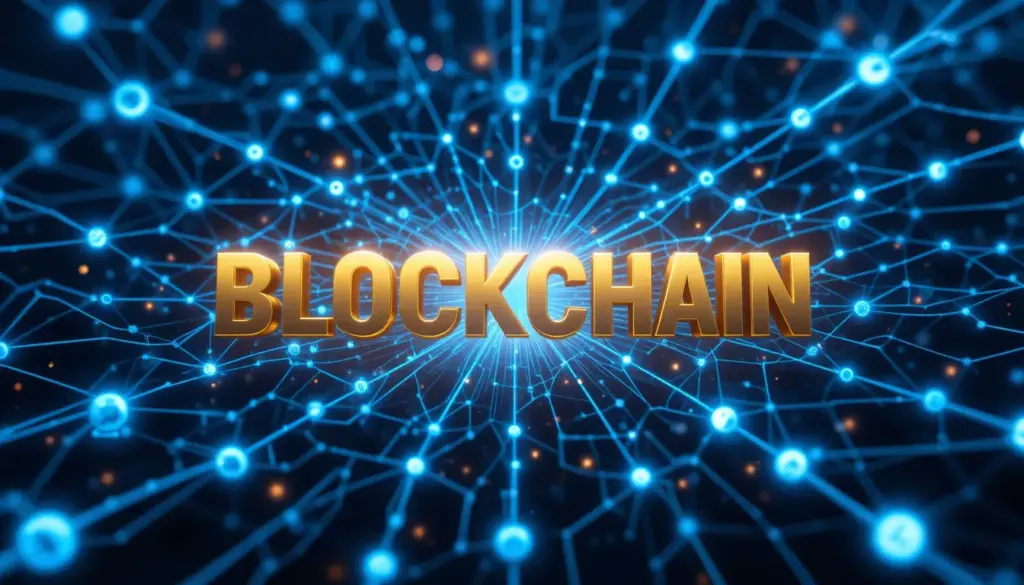The power of blockchain technology is rapidly extending beyond the realm of finance and into the tangible world. At the forefront of this expansion lies Decentralized Physical Infrastructure Networks (DePIN). DePIN signifies a groundbreaking paradigm shift, moving away from physical infrastructure owned and operated by centralized entities towards decentralized networks powered by blockchain. This isn’t just a technological evolution; it presents novel economic opportunities for participants and paves the way for a more efficient and transparent infrastructure ecosystem. In this article, we will delve into the core concepts and characteristics of DePIN, explore its key technological components, highlight noteworthy projects, and analyze the burgeoning market landscape and future prospects.

Understanding Decentralized Physical Infrastructure Networks (DePIN)
What Exactly is DePIN?
Decentralized Physical Infrastructure Networks (DePIN) represent a new breed of physical infrastructure networks built and operated on blockchain technology. The fundamental aim of DePIN is to transition traditionally centralized infrastructure – such as telecommunications networks, energy grids, data storage facilities, and transportation systems – to a model where ownership and operation are distributed among a global network of individuals and organizations. A key feature of DePIN is its incentive mechanism, rewarding participants with tokens for contributing resources and fostering the growth of a more transparent and efficient infrastructure ecosystem.
Key Characteristics of DePIN
✅ Decentralization:
- Distributed Ownership and Operation: Instead of a single corporation or institution monopolizing infrastructure ownership and operation, a diverse range of participants worldwide contribute to building and maintaining the infrastructure, earning rewards in return. This significantly reduces the risk of a single point of failure and enhances network stability and security.
- Permissionless Participation: Anyone meeting specific criteria can join the network, contributing infrastructure or utilizing its services. This lowers entry barriers and encourages greater innovation and competition.
✅ Community-Driven:
- Participation-Based Growth: The infrastructure expands and is maintained through the voluntary contributions of network participants. This minimizes upfront investment burdens and allows for infrastructure development aligned with actual user demand.
- Transparent Governance: Blockchain-based transparent governance systems enable participants’ input in network operations and decision-making processes, fostering a community-centric and sustainable ecosystem.
✅ Token Economy:
- Incentivizing Contributions: Network participants receive cryptocurrency tokens as rewards for their contributions, such as providing infrastructure, sharing data, and maintaining the network. These tokens can be used within the network for service fees, governance participation, and can also be traded on external exchanges.
- Value Creation and Sharing: As the network grows, the value of its tokens can appreciate, directly benefiting the participants. This incentivizes active engagement and ensures the network’s long-term sustainability.
Core Technological Elements of DePIN
The DePIN ecosystem is underpinned by several key technologies:
✅ Blockchain:
- Decentralized Ledger: Serves as a transparent and secure distributed ledger, recording and managing all transactions and data. This ensures data integrity and enables trust-based network operations.
- Smart Contracts: Automate the execution of contractual agreements based on predefined conditions. This facilitates peer-to-peer transactions without intermediaries, enhancing the efficiency and transparency of network operations.
✅ Cryptocurrencies and Tokens:
- Network Incentives: Used to reward participants for their contributions and act as a medium of exchange for economic activities within the network.
- Governance Tokens: Grant holders the right to participate in network operations and decision-making.
✅ IoT (Internet of Things) and Sensor Technology:
- Data Collection and Transmission: Facilitate the collection of data from the physical world and its transmission to the network. This allows DePIN to connect with the real economy and offer a wide range of services.
✅ Wireless Communication Technologies:
- Ensuring Network Connectivity: Various wireless communication technologies, such as WiFi, cellular, and satellite communication, are utilized to connect participants’ devices to the network and facilitate data transfer.
Notable DePIN Projects to Watch
The DePIN ecosystem is experiencing rapid growth, with innovative projects emerging across various sectors:
✅ Decentralized Wireless Networks:
- Helium (HNT): This project allows individuals to deploy and operate LoRaWAN and 5G hotspots, expanding network coverage and earning HNT tokens as rewards. With hundreds of thousands of nodes operational globally, Helium provides connectivity and data transmission services for IoT devices. It migrated to the Solana blockchain in April 2023.
- Wi-Fi Dabba: Targeting the Indian market, this project aims to enable the creation and sharing of affordable WiFi networks, allowing individuals to earn income. It holds significant promise for improving internet access in underserved regions.
✅ Decentralized Storage Networks:
- Filecoin (FIL): Users can rent out their unused hard drive space on the InterPlanetary File System (IPFS) and earn FIL tokens in return. Filecoin offers a cost-effective and secure data storage solution compared to centralized services.
- Arweave (AR): This decentralized storage network focuses on permanent data storage. Once data is stored, it cannot be deleted or altered, ensuring data permanence and immutability.
✅ Decentralized Computing Networks:
- Render Network (RNDR): By leveraging idle GPU computing power, this project enables users to perform 3D rendering tasks and earn RNDR tokens. It increases accessibility to high-performance computing resources and reduces rendering costs.
- Akash Network (AKT): This network allows users to offer their unused server capacity as cloud computing services and earn AKT tokens. Providing more affordable and flexible computing resources compared to traditional cloud providers like Amazon Web Services (AWS), it’s gaining traction as a decentralized alternative.
✅ Decentralized Energy Networks:
- Powerledger (POWR): This platform facilitates peer-to-peer trading of surplus energy. It supports the efficient management and trading of distributed energy resources, such as solar power, and has been implemented and is operational in various countries including Australia, Thailand, the United States, Japan, and France.
DePIN Market Status and Future Outlook
The DePIN market is in its early stages but exhibits tremendous growth potential alongside the advancement of Web 3.0 technologies. The market capitalization of DePIN-related cryptocurrencies is on a consistent upward trend. According to recent reports, the DePIN market generated over $500 million in revenue in 2024, a 100-fold increase compared to 2022, with a market capitalization of approximately $50 billion. Some experts even predict a potential 1000-fold growth in the DePIN market over the next decade.
✅ Current Market Status:
- Rapid Growth: The market capitalization of DePIN projects is steadily increasing, attracting new projects and continuous investment.
- Expansion Across Sectors: Initially focused on storage and wireless networks, DePIN applications are now expanding into diverse fields such as computing, energy, and sensor networks.
- Increased Institutional Investment: Growing investments from venture capital firms and cryptocurrency investment funds in DePIN projects are fueling optimism for market growth.
✅ Future Outlook:
- Revolutionizing Existing Infrastructure Markets: DePIN is poised to address the inefficiencies, potential for censorship, and high costs associated with centralized infrastructure, offering more efficient, transparent, and affordable infrastructure services.
- Creating New Business Models: Individuals will be empowered to monetize their idle resources, giving rise to novel forms of the sharing economy.
- Key Infrastructure for the Web 3.0 Ecosystem: DePIN will provide the essential physical foundation for various Web 3.0 services, including the metaverse and decentralized applications, playing a crucial role in the growth of the Web 3.0 ecosystem.
- Impact of Technological Advancements and Regulatory Clarity: Advancements in blockchain, IoT, and wireless communication technologies, coupled with clearer regulatory frameworks for DePIN, are expected to further accelerate market growth.
In Conclusion
We’ve explored the concept, characteristics, key technologies, notable projects, and the current and future landscape of Decentralized Physical Infrastructure Networks (DePIN). More than just a burgeoning tech trend, DePIN represents an innovative paradigm with the potential to overcome the limitations of traditional centralized systems and build a more transparent and efficient future infrastructure ecosystem. Individuals can leverage their underutilized assets to contribute to network growth and earn rewards, while businesses can develop innovative services on more affordable and flexible infrastructure. For investors, DePIN presents an attractive opportunity to participate in a market with significant growth potential and position themselves for the future.
While the DePIN market is still in its nascent stages and faces challenges such as enhancing technological maturity and establishing clear regulatory frameworks, its trajectory within the broader trend of decentralization suggests that DePIN is poised to become a core infrastructure component driving the Web 3.0 era. Now is a crucial time to pay attention to the DePIN ecosystem and explore various projects to prepare for the future.


